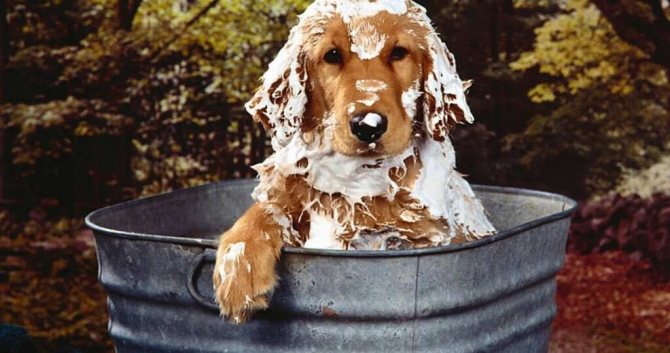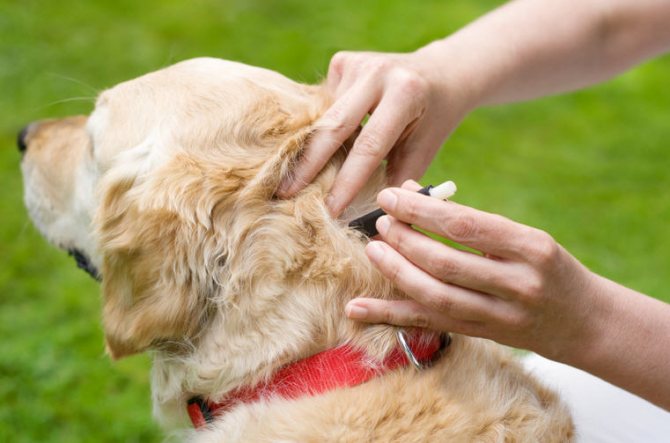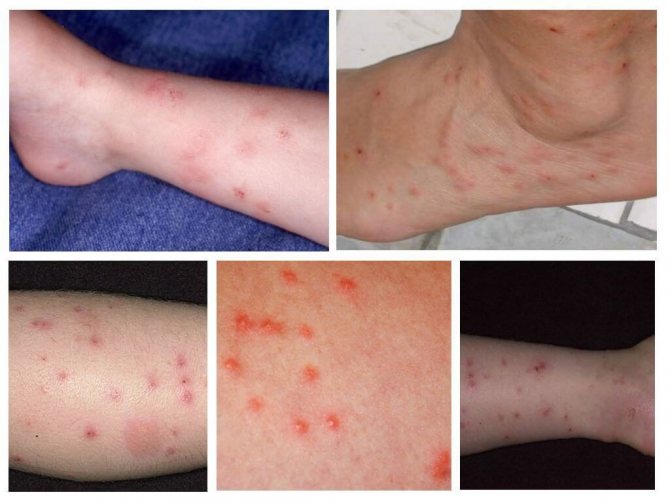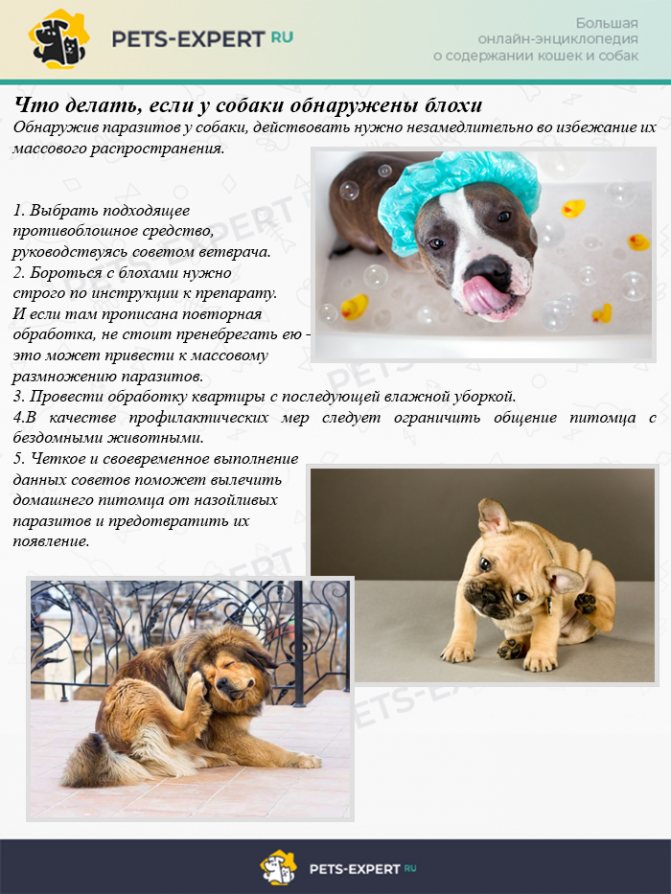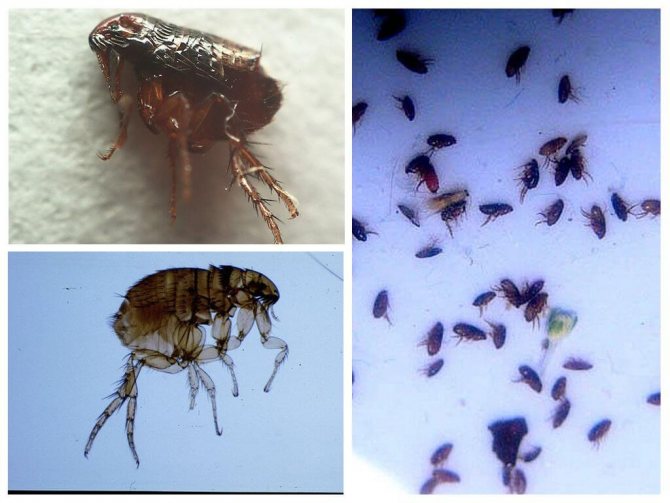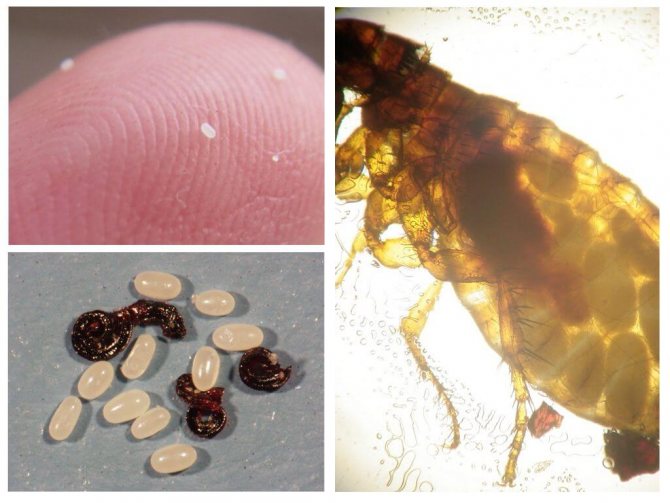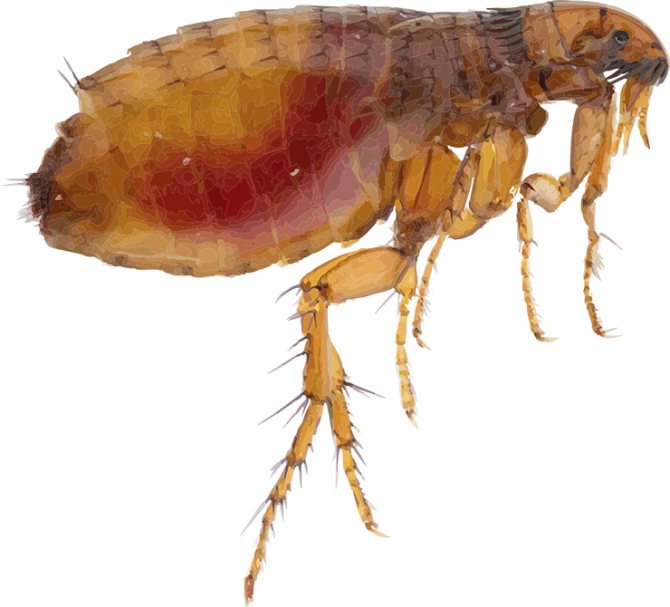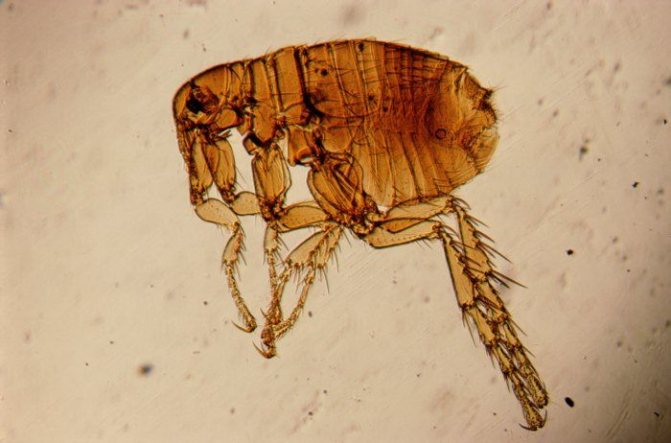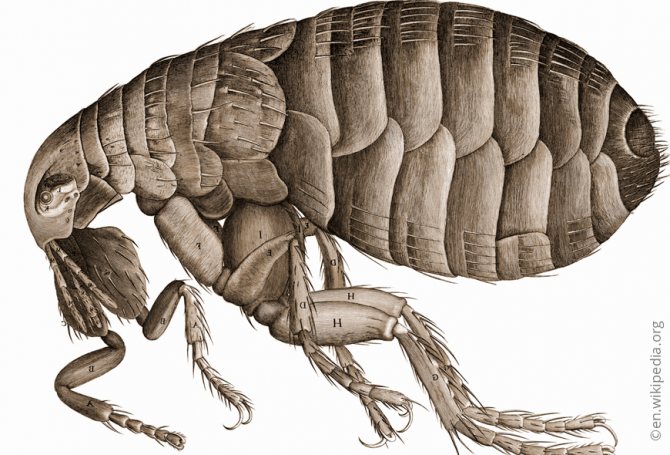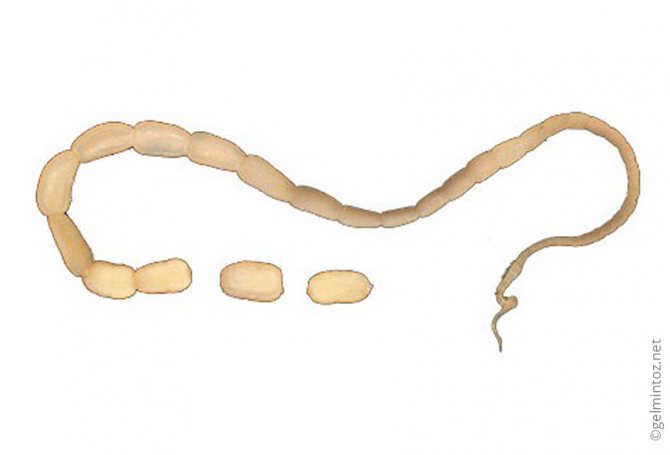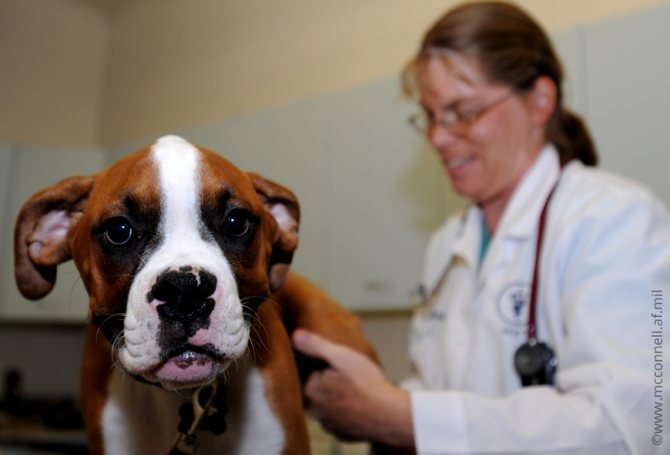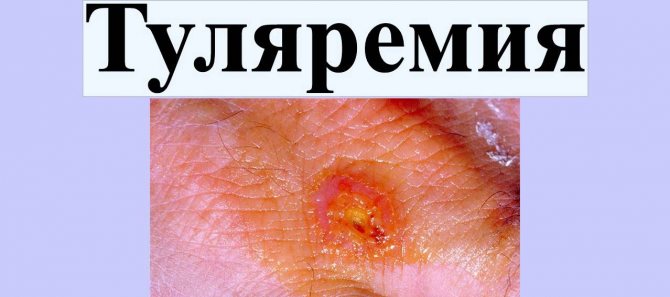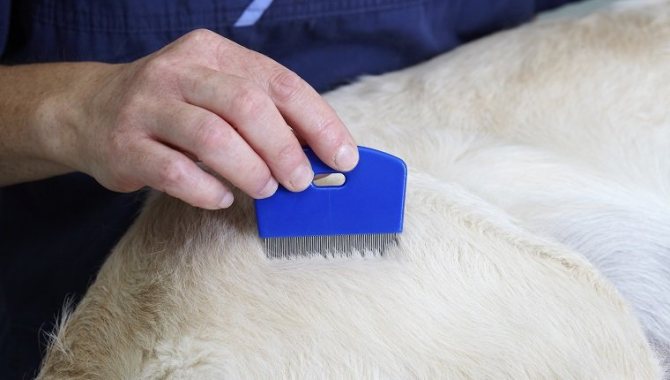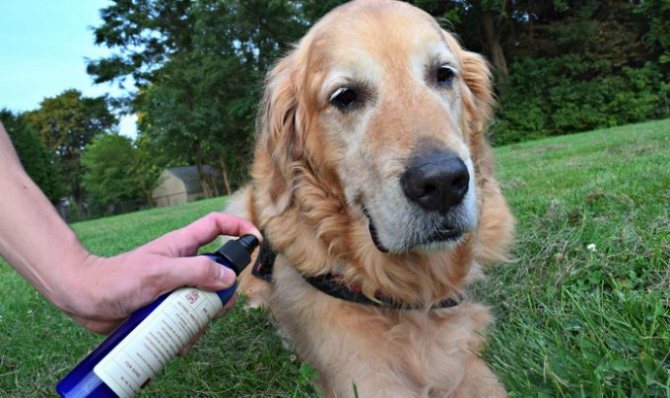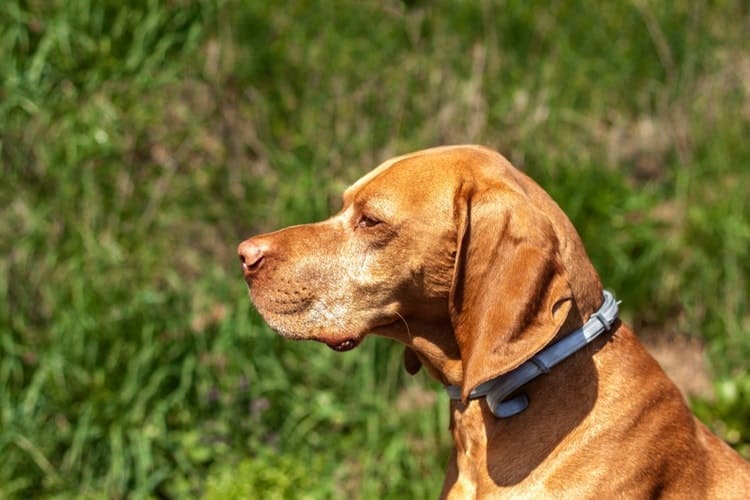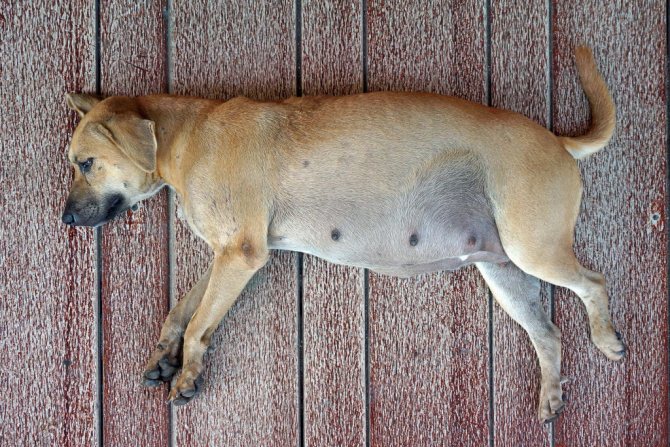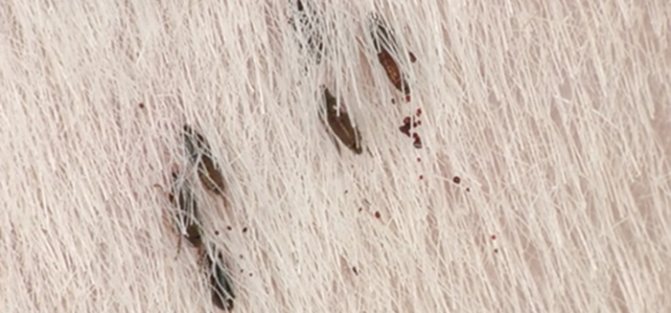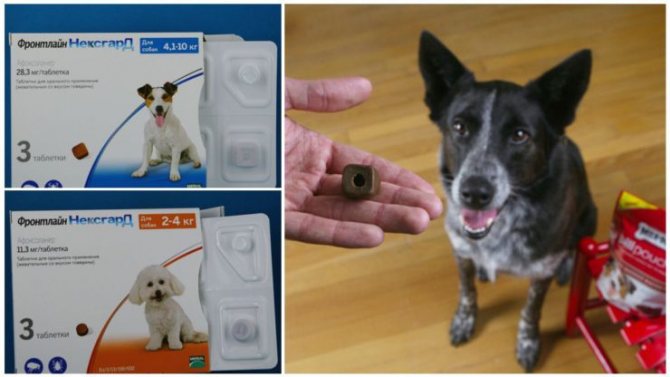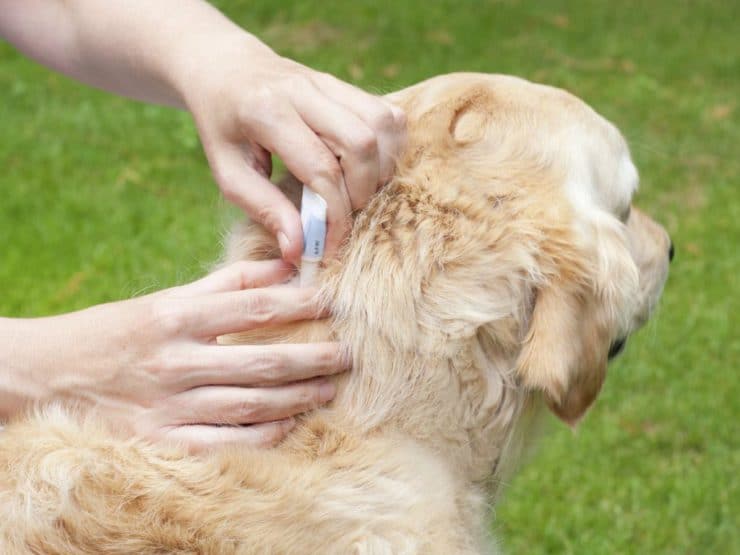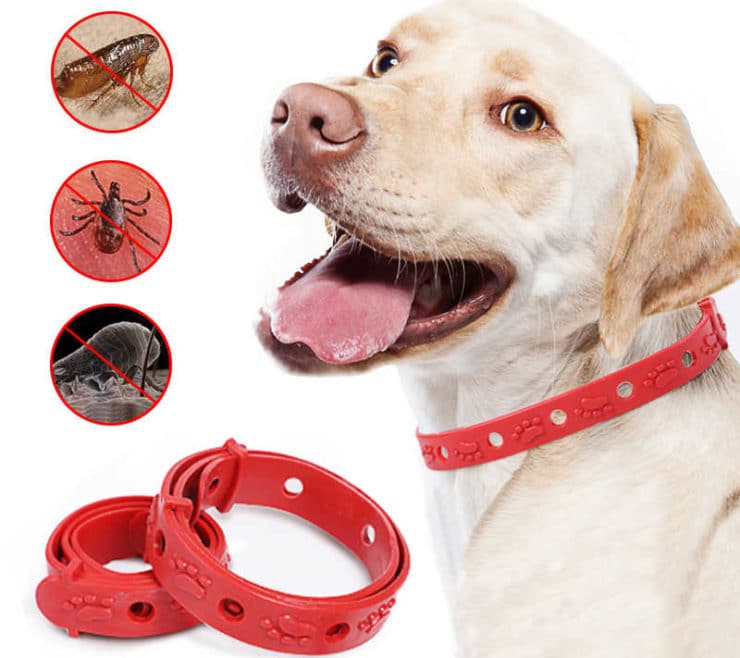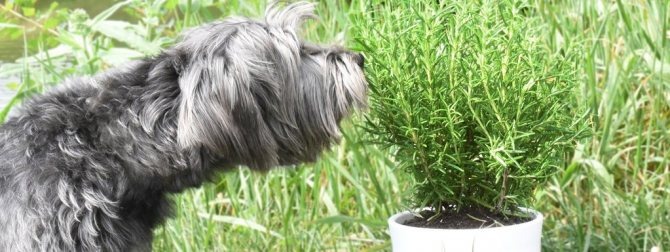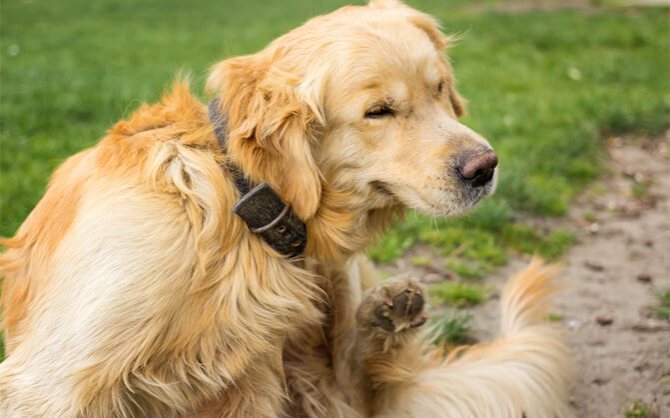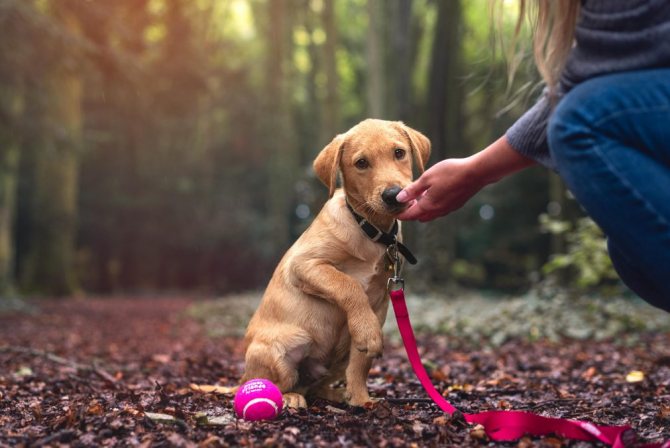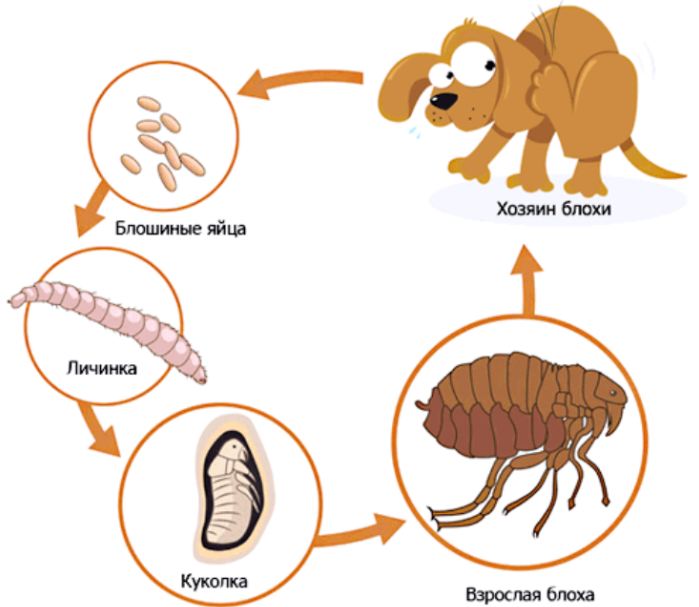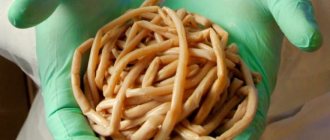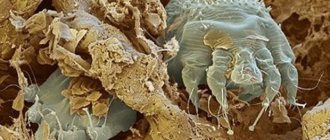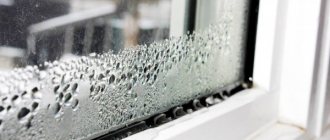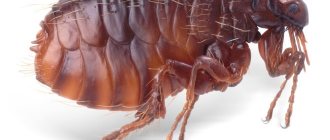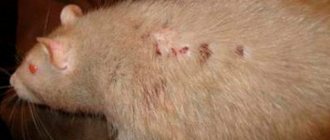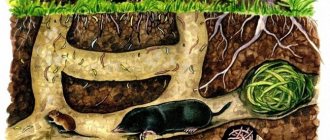Fleas in dogs. These small insects bring significant discomfort, causing itching, eczema, and various infectious diseases in their host. The parasite multiplies at an incredible speed, but it prefers to do this not on the body of the animal, but in secluded places of the external environment. On carpets, in crevices behind baseboards, or in fallen leaves. Once every few days, the female lays a large number of eggs from which larvae appear, outwardly resembling small caterpillars, covered with a dense protective shell. They feed on organic waste and, after several molting cycles, are transformed into a sexually mature specimen awaiting a new prey.
Dog flea: where does it come from and where does it live?
The flea is a blood-sucking insect, which is often a carrier of various causative agents of human and animal diseases. It is widely believed that dog fleas live and reproduce on animals. But this is not the case. The parasites jump on the dog to get a blood sample and then hide in a secluded place. This can be a dog bed, a rug, crevices in the floor. It is in such places that fleas live.
A dog flea is not a domestic animal, but a domestic animal that settles in or near a person's housing and does only harm.

What is the danger of infection
First of all, bloodsucking is a source of skin irritation. From multiple bites, itching begins, dermatitis and allergic reactions appear. The quadruped is constantly itching, showing aggression, and disorders in the nervous system appear from prolonged stress. The animal combs itself to severe wounds that are difficult to heal.
Danger of disease
The serious consequences of the appearance of fleas in dogs are considered diseases that bloodsuckers transfer from one animal to another. These include:
- salmonellosis;
- plague;
- anthrax;
- viral encephalitis;
- brucellosis;
- typhoid fever;
- tuberculosis;
- intestinal worms;
- dipylidiosis.
Many diseases are characterized by severe consequences and even threatened with death. A quadruped can swallow a flea, which causes tapeworms to settle in the stomach and intestines. Individuals grow up to 50 cm: they disrupt the dog's digestion and ultimately lead to death from malnutrition.
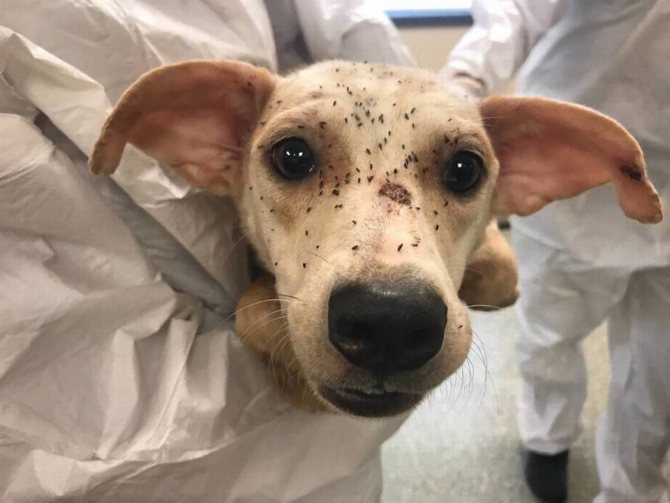

If the immunity of an adult animal is able to fight infection, then the situation in babies is much worse. Puppies up to 2 months old have undeveloped immunity, so they become infected much more often. They can be sick with helminthiasis or show a strong allergy even to the enzyme of the parasite's infected saliva.
Danger to other animals and humans
Dog fleas are no less dangerous for cats and domestic rodents. They do not disdain all the animals that may be near, and they bite everyone who has blood. Despite the fact that fleas are divided into many types, they have no particular preferences in choosing a carrier.
Fleas in dogs are transferred to humans only if they are very hungry. Without hair, it is difficult for them to stay on the skin in order to fully eat. In an apartment or house, they attack a person when he is in a relaxed state or asleep. If there are a lot of fleas in the house, they can bite a person's legs. Pests do not live on humans, dogs and other domestic animals, but constantly move, laying eggs. This is the biggest problem.
Life cycle and reproduction
Fleas reproduce year-round under favorable conditions. Mating takes about 10-15 minutes, after which eggs begin to develop in the female's body. At one time, a flea lays from 4 to 10 eggs 1-2 times a day.
Interesting! The female pushes the eggs with force so that they fly away from each other. So the hatched larvae will have no shortage of food.
The life cycle of this insect consists of four stages of development:
- Eggs. They look like oblong whitish balls.
- After 1-6 days, a larva emerges from the egg. It looks like a worm covered with hairs with a large head and well-developed jaws. The larvae feed on any organic matter. This stage lasts 2-3 weeks, and during this time the flea larva (nymph) molts three times.
- Doll. After the 3rd molt, the larva becomes covered with a cocoon, in which it lives until the onset of favorable conditions for life.
- Imago. The average lifespan of an adult is about two months.


Interesting! In a cocoon state, fleas can survive up to 200 days.
How do they reproduce?
Flea breeding directly depends on their habitat... The average body temperature of a dog varies from 37 to 39 ° С, and fleas, in turn, are heat-loving insects. Reproduction can take place on the animal itself or in some other secluded place: in upholstered furniture, on carpets, etc.
After laying eggs, the adult continues to parasitize on the animal, and the egg begins to develop into a larva, after which the larva becomes a pupa, and then transforms into a flea. The pupa is protected by a stable shell and is able to live inside without feeding for almost a year.
Often after full anti-flea treatment (drops, shampoos, collars) recurrence of these insects can be detected - this is just the case when the pupa has been in a protective shell for several weeks or months, and then transformed into a flea.
Being on the body of an animal, a flea can feed every day, while there is no suitable prey, a bloodsucker can go without food for up to two weeks.
We recommend looking at excellent flea remedies for Bars dogs and effective Kiltix collars.
How to tell if a dog has fleas?
Signs of the presence of fleas on the dog's body include:
- periodic scratching of different parts of the body, "biting out" of the hair;
- when stroking the dog against the fur, you can see insects quickly crawling on the skin;
- the presence of white grains on the wool - flea eggs;
- small black crumbs, like lumps of dirt, reddening when moistened. And this is nothing but the excrement of parasites;
- when bathing the dog, you can see insects jumping off the pet in the water.
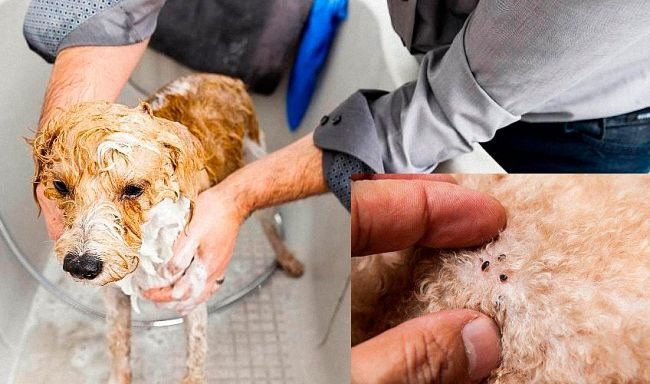

Larvae
The female begins the breeding process immediately after fertilization. Lays 5 to 12 eggs daily. She shoots them at long distances, wherever necessary. Does not build special nests. Eggs roll onto the floor, grass, animal bedding, rug. In a lifetime, it is capable of laying about 500 eggs.
The larvae develop inside the egg for about 2 weeks. They are absolutely invisible to others, since they have miniature dimensions - 0.5 mm. The appearance of the larvae differs significantly from the adult fleas, as well as the way of life.
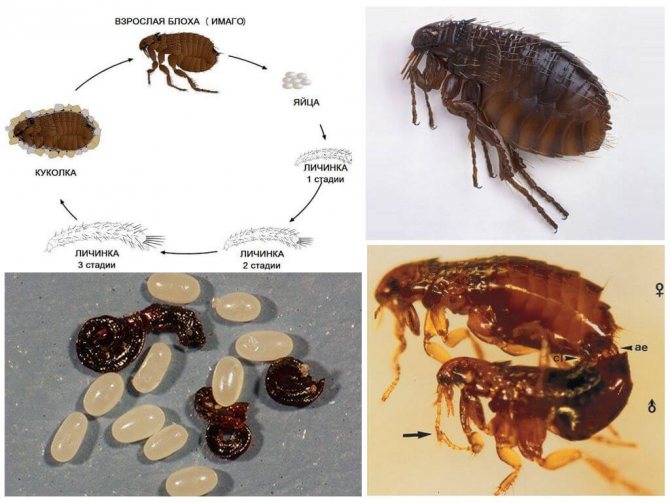

Dog flea breeding
The larvae are born as small white worms. Body length about 1 mm. They hide from the sun's rays, feed on waste, dead particles of the epidermis, feces.
The full development cycle of flea larvae lasts 20 days. During this time, up to 5 molts pass, each time increasing in size. At the last stage, it pupates, after 2 days a full-fledged flea appears, which immediately starts mating.
Flea control products
Any veterinary pharmacy sells flea medication for pets. In addition, some dog breeders successfully use folk methods.
Effective pharmaceutical preparations
Currently, pharmaceutical anti-flea drugs are presented in a huge assortment. To combat parasites, use:
- Shampoos. The result is achievable only with minimal contamination.
- Flea drops. An effective remedy that begins to act after 1-2 days. The protective effect lasts for about 3 months.
- Flea spray. Acts instantly. Protects against re-infection for 1 month.
- A flea collar is a prophylactic agent. Contains insect repellent substances. Gradually they surround the dog with a protective layer.
- Chewable tablets. They do not significantly reduce the number of parasites. In addition, their use can lead to poisoning or allergies.
- Flea powder. This drug is not in demand as it is inconvenient to apply. In addition, the use of this method is fraught with the possibility of poisoning the animal.
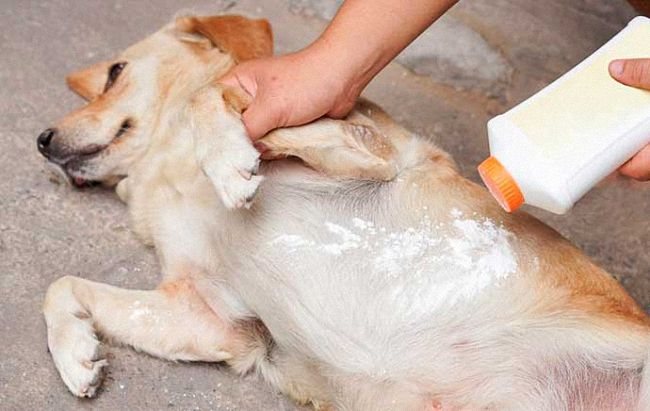

Any remedy has its own duration of action. As soon as the effect of the drug ends, the procedure must be repeated.
Folk remedies
With a slight infection, as well as in the treatment of sick or weakened animals, puppies or to prevent the appearance of parasites, folk remedies are quite effective, such as:
- Decoctions or herbal infusions used when bathing. Hellebore, tansy, eucalyptus, wormwood effectively scare off fleas.
- Soap solution. For its preparation, a decoction is made from eucalyptus leaves. A few drops of cedar, fir or pine oil and crushed laundry soap are added to the cooled and strained broth. This solution is used for bathing dogs.
- Apple vinegar. To get rid of parasites, the dog's hair is abundantly moistened with an aqueous solution of apple cider vinegar and left for 1 hour, after which it is combed out. To prepare the solution, take 1 part vinegar and 3 parts water.
- Citrus, eucalyptus or coniferous essential oils. Due to the fact that these products have a pungent smell, they are used to repel fleas. They are applied directly to the dog's coat or added to the water when bathing.
- Garlic. Its essential oils also repel fleas. However, for dogs, the use of garlic is considered dangerous, as its active substances can damage the esophagus. To prepare a tincture, 2-3 cloves are crushed, pour 200 ml of water and leave for 8-10 hours. The filtered liquid is applied only to those parts of the body that the dog cannot reach and lick.


What do fleas look like and what is their internal structure?
Fleas are wingless insects that parasitize other creatures. They need blood to feed. There are over 2000 species of fleas in the scientific classification. The species that parasitize on dogs, their description and distinctive features are presented in the table:
| View | External description | Color | Potential victims | Distinctive features |
| Human | The body is rounded, reaching 3 mm in length. | Dark brown | Man, dogs and cats are attacked on condition of severe hunger. | Extremely bouncy, present on the human body only at the moment of the attack. After saturation, they move to interior items. |
| Doggy | Slightly elongated and laterally flattened body, about 3 mm long. The head is round. Three pairs of tarsi, with 8 bristles on the last limbs. | Brown, slightly shiny | Dogs, but they also bite humans. | The whole body of the dog is affected. They move in dashes or small jumps. |
| Feline | Body length 1.5–2 mm. There are 6 soft hairs on the hind legs. The head is elongated. | Brown | Cats, sometimes dogs.Such fleas rarely bite a person. | Move by jumping. Unlike dog fleas, they bite their prey only in the area with the thinnest skin. |
| Permeable | The body is oval, 1–2 mm long, the lower jaws are small with short palps, the upper ones are serrated like a saw. | Chocolate brown | Birds, cats, dogs, people. | It is not a sucking parasite, but a parasite that penetrates the skin. The fertilized female swells to the size of a pea, lays eggs under the skin of the victim. It causes unbearable itching, inflammation. Lives in South and Central America, West Africa. |
All fleas have common features in the structure of the body. On the head they have simple eyes, antennae-antennae and a piercing-sucking mouth apparatus. The chest is represented by 3 segments. The abdomen consists of 10 segments, the sclerites of which are connected by folded membranes. What an insect looks like can be seen in the photo.
Animal handling rules
To achieve a positive result when using flea remedies, the following rules must be observed:
- For 2 days before and after treatment, the dog must not be bathed. This is due to the fact that the shampoo washes away the fat layer from the skin of the animal, through which the active substances of antiparasitic drugs are distributed.
- Drops are applied exclusively to the skin. To do this, you need to well push the animal's fur with your hands.
- It is not recommended to carry out processing at high temperatures and exposure to direct sunlight.
- The timing of the frequency of treatments must not be violated.
Fight against parasites
So, how to remove fleas from a dog. First, you should make sure that your pet is worried about these bloodsuckers. This will be evidenced by the following signs:
- the animal often itches, and it experiences anxiety in different parts of the body;
- in the wool there are small white grains - flea eggs, as well as black dots - waste products of adults;
- when bathing a pet with the naked eye, you can see how fleas en masse move onto its head and jump into the water;
- if you comb the coat with a thick brush, then a few parasites will certainly remain on it.
But remember, if the dog itches, but there are no fleas, then this will indicate irritation of the animal's skin, which could be caused by:
- other insects - most often mites. In this case, the dog will only brush one part of the body - the ear, side, etc.;
- allergies - to dust, food, combustion products, smoke or synthetic materials that the animal has touched;
- unbalanced diet or lack of vitamins;
- chapping of the skin - after prolonged exposure to the sun, a strong wind can cause a similar reaction;
- fungal infection - its main symptom is red spots under the coat;
- stress - oddly enough, but this is also possible. This can be caused by a lack of fresh air when the dog has not been outside for a long time.
In all these situations, it is necessary to immediately take the animal to the veterinarian.
And we return to dog fleas and remedies that will help get rid of them.
Antiparasitic drops
Drops are the most sought after and reliable flea remedies for dogs. They are applied to the area of the withers so that the animal cannot lick off the drug, and for a certain time the pet is isolated from water. The effectiveness of the drug is determined by its active ingredient; the duration of action will also differ.
The disadvantages of drops include:
- high cost compared to other antiparasitic drugs;
- some of them are toxic to warm-blooded animals.
Popular flea drops include:
- Stronghold - non-toxic to animals, can be used for pregnant and lactating dogs. Suitable for puppies that have reached the age of 6 months. The product is compatible with other veterinary drugs and is suitable for dogs of all breeds.
- Bars is a domestic remedy for fleas for dogs, produced in pipettes. One pipette will be enough for one dog. The product is applied to the withers and along the line of the spine. When used correctly, it is highly effective.
- Frontline is a fairly powerful insecticidal agent, but if it enters the animal's body, it can provoke vomiting. Therefore, it should be applied with extreme caution, observing all the rules prescribed in the instructions.
The above drugs are the most in demand and managed to earn positive reviews from dog breeders who tested them on their pets. In general, drops are ideal for animals that rarely come into contact with water and live alone, that is, no one will lick them.
Parasite shampoos
It should be warned right away that flea shampoos for dogs are the least reliable remedies. Their validity does not exceed 7 days, moreover, not every dog can be bathed, since some breeds simply do not lend themselves to this procedure. In addition, all dogs begin to actively groom themselves after bathing, so the use of antiparasitic shampoos can be dangerous.
Advice! If you nevertheless decide to use this particular tool, then you should first talk with dog breeders who solved the same problem for the corresponding breed.
In most cases, these drugs are used for dogs that rarely go outside. With constant contact with infected animals, the use of shampoos does not bring positive results.
For breeds with delicate coats, we recommend products from the following brands:
- Phytoelite;
- Beaphar;
- Mr. Bruno.
Important! Flea shampoo for puppies is selected based on the concentration of the insecticide, which should be minimal. In this case, the first bathing must be carried out with a small amount of funds. Otherwise, there is a risk of side reactions: chills, vomiting, etc.
For large dog breeds with a stiffer coat and less sensitive skin, shampoos can be used:
- Celandine;
- Bim;
- Leonardo;
- Lugovoi.
But if the dog regularly walks on the street and is constantly in contact with infected animals, then one shampoo will not be enough. For reliable protection in this case, it is necessary to use an integrated approach - use drops or sprays in parallel, and, if the dog allows, put on an anti-flea collar. For a description of popular brands and recommendations for choosing, see the article: Flea collars for cats and dogs.
Room processing rules
Fleas do not live permanently directly on the animal itself. They live in places where the pet is kept. Therefore, loungers, bedding, carpets, aviaries must be systematically treated with special means. When processing, the following precautions must be observed:
- Expired drugs should not be used.
- It is necessary to carefully read the instructions for use of each drug, paying attention to the indicated dosages, the age of the animal, its weight, recommendations for further observation.
- Before processing the premises, it is necessary that all households and pets leave the area where the processing is supposed to be carried out.
- The treatment of the premises must be carried out using appropriate protective equipment.
- At the end of the work, everyone must leave the room. It is imperative that you wash your face and wash your hands thoroughly.
- After the expiration of the time specified in the instructions, the room should be ventilated, and only then you can return to the treated and ventilated room.
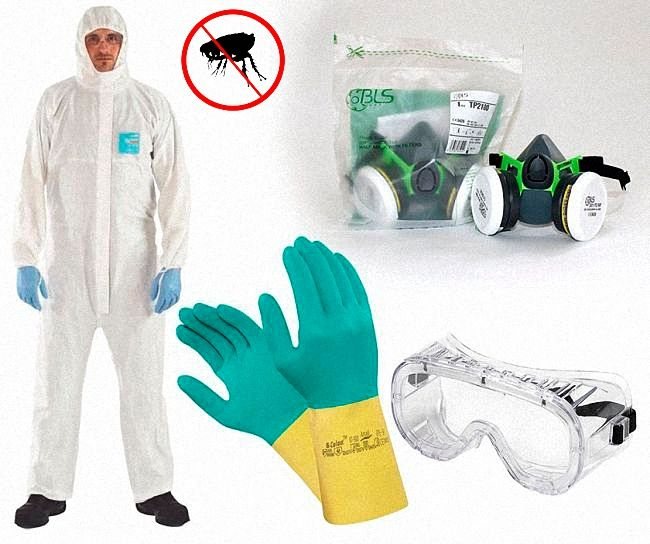

Unhindered development
These insects have certain advantages: there is no competition for food or habitat between each stage of development. Accordingly, they have an order of magnitude more chances of survival.
This is due to the fact that eggs, larvae, pupae plus fleas are very different both in appearance and in lifestyle.
Differences between the larva of a sand flea in a cat, dog or rat for an ordinary person also do not exist. These are small worms from white to darker in color.
When viewed under a microscope, a small amount of hair can be seen. To do this, see how the flea larva looks in the enlarged photo.
Such a cover makes them look like caterpillars with a head and jaws of a gnawing and scraping type. The larvae, otherwise they are called nymphs, reach no more than 5 mm in length. Due to the complete absence of eyes and legs, they have an instinct and an incredible sensitivity to light.


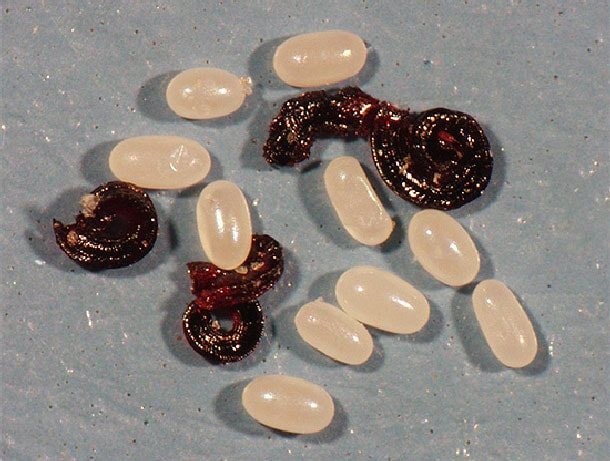

Nymphs love hard-to-reach places, but always close to a food source: garbage heaps, droppings, sewage, dirty places in the room. They feed on dead organic matter and excrement of adults. You can see a picture of a carpet affected by flea larvae and enlarged with a microscope.
Temperature for destruction
It is good to fight flea eggs and adults in winter, but for this you need to know at what temperature the same fleas, as well as their larvae, die. A logical question, especially if your dog or cat has parasites and you are looking for a sure way to destroy intruders.
If the temperature is too low or too high, eggs, larvae and fleas die. In comfortable conditions, at a temperature of about 23 ° C, an air humidity of 60% and the presence of food, the larvae develop for about three weeks.
In an unfavorable environment, it can be in suspended animation for a long time, up to a year. Knowing at what temperature fleas and their eggs die, many use this method of struggle: in the summer they take things out in the sun, and in the winter they take them out into the cold.
Destruction methods
The sooner you find parasites in your pet or notice bites on your body, the less suffering and problems you will experience. There are many ways to get rid of eggs, larvae and fleas from a cat or dog. The table below lists tools that can help you.
| Pharmacy name | Address | Name of funds | Price |
| Disinfection and equipment | Moscow, Prospect Mira, 211 | Combat Power Flying Insect Spray | from 350 rub. |
| Disinfectants UNIdez | Saint Petersburg, 6th Line V.O., 25 | Karbofos insecticidal preparation | from 450 rubles |
| Arrow | Minsk st. M. Bogdanovich, 114. | Cucaracha liquid concentrated insect repellent | from 229 rub. |
| Incom Service | Kiev, st. Architect Verbitsky, 32A | Tetrix from any insects | from 230 gr. |
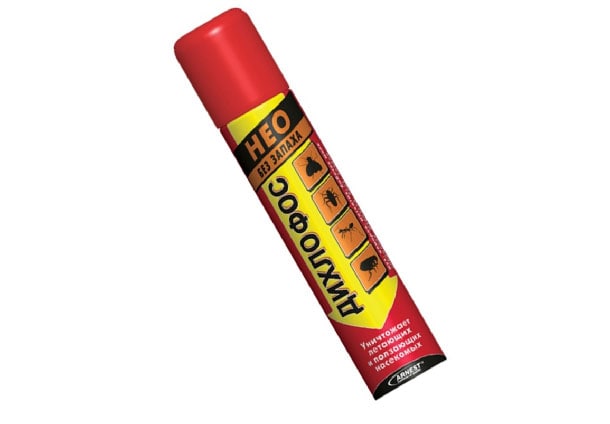

It is necessary to carry out a full-fledged set of measures to competently solve this unpleasant problem. Fleas jump on the victim only to feed, and prefer to live nearby. The larvae are usually scattered throughout the territory and live in secluded places.
If even a small clutch of several eggs remains on the pet or in the apartment, then within literally several months you will receive an invasion of 500 attacking adults.
It is necessary to take the appearance of bloodsuckers seriously and think about how to quickly remove eggs, larvae, and fleas from cats or other pets. Many people prefer to use folk remedies to kill insects, as they do not contain chemicals.
First stage
Treatment of the animal: choose a quality anti-flea remedy for your pet and follow the procedure according to the instructions attached to the store preparation or according to a folk recipe.
With tar soap.
You will need:
- tar soap;
- water.
Algorithm of actions:
- Bathe your pet in the bathroom with soapy water and tar soap.
- Dry with a towel that absorbs moisture well.
- Carefully comb out the entire coat with a comb.
- Apply drops or wear a flea collar.
Tar excellently fights eggs, larvae and fleas. Gently affects the skin plus animal hair. Suitable for cats as well as dogs.
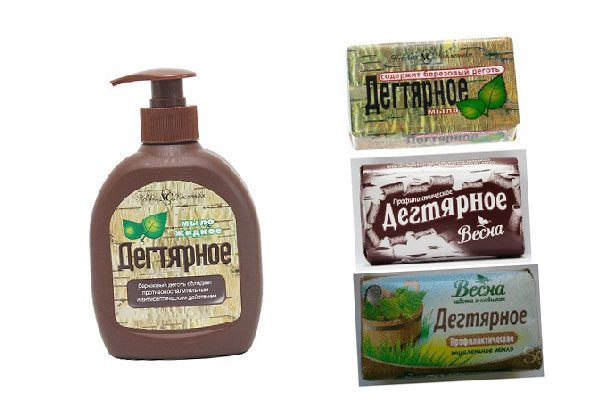

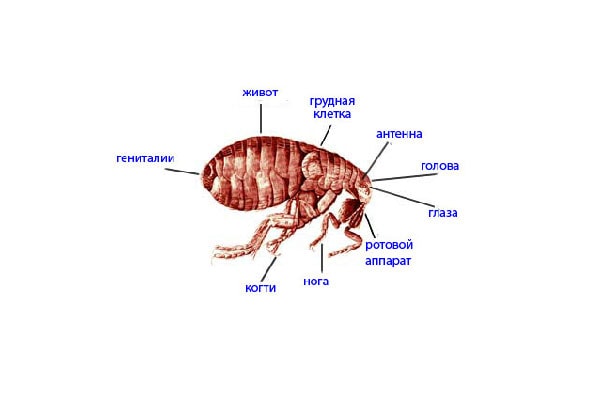

The second stage is the disinfestation of the premises
You already know that larvae do not live on animals. Only adult adults can be scared away with wormwood or tansy. Therefore, it is necessary to choose a remedy that will not scare away, namely, destroy eggs, larvae and fleas at the same time.
Since you already know at what temperature fleas, their larvae, and also eggs die. If it is a cold season, some resort to the simplest folk method: they open all the windows and chill the entire room for several hours. Next, they clean up to collect the insects and make sure that they are all destroyed.
But perhaps the weather conditions cannot come to your aid, then more serious actions will be needed.
Disinsection with tar soap.
You will need:
- tar soap;
- water;
- cleaning devices.
- insecticide.
Algorithm of actions:
- Vacuum all corners of the apartment, floors, upholstered furniture, mattresses, carpets, bedding, etc.
- Make a soapy solution with warm water and tar soap in a bucket.
- Thoroughly rinse all surfaces: floors, baseboards, window sills, doors, etc.
- Move the furniture, rinse the walls up to 1.5 meters in height, since this is the distance fleas can jump.
- The same processing must be done in the kitchen.
- Wash all things, linen, bedding of the animal, process even its toys.
- Pack the products in bags, close all windows and vents hermetically.
- Choose a quality insecticide-based aerosol, treat the entire room completely.
- Leave the apartment with the animals and household members for a few hours.
- After the time is up, go back and do a wet cleaning.
- It is recommended to carry out a similar treatment after two weeks. Similar activities can be carried out with various agents: boric acid, vinegar, salt, soda, etc. The main thing is that the funds give the desired result.
Most popular remedies
Executioner.
Pros:
- the most powerful drug for removing any insects, including the destruction of their larvae and eggs;
- easy to use;
- does not require re-processing.
Minuses:
- pungent smell, but quickly disappears;
- cost: about 2,000 rubles are spent on a 2-room apartment;
- toxic, protection required when processing.


Cucaracha.
- a similar potent preparation of all-round effects;
- economical;
- easy to use;
- affordable price.
Minuses:
- a pungent smell that lasts up to 3 days;
- toxic, protection required during processing.
Get.
Pros:
- an effective remedy for fleas, larvae and eggs;
- has a pleasant citrus aroma;
- has a detrimental effect on parasites until it is washed off the surface;
- absolutely safe for children and pets.
Minuses:
- high product cost.


Dichlorvos.
- harmless to animals and people;
- lack of smell;
- affordable cost;
- ease of use;
- quickly disappears.
Minuses:
- protection is needed;
- better to do reprocessing.
Preventive measures
The effectiveness of cleaning depends on compliance with certain rules:
- Limit pet contact with stray animals to a minimum.
- During warmer months, wear a flea collar or other flea deterrent.
- Maintain cleanliness and hygiene in the room. Ventilate the apartment at all times.
- Pay attention to the behavior and condition of your pet, do a visual inspection of the coat and skin once a week.
Knowing what temperatures larvae and adult fleas are afraid of, try to take things out in the sun in the summer in order to prevent them.
Back to description
Causes and signs of infection
Some argue that a dog living in an apartment and occasionally appearing on the street cannot become a carrier of fleas. However, this opinion is not true. Bloodsuckers parasitize not only on yard dogs, but can also feel comfortable on humans. It is he who, in this case, is the carrier and is able to bring fleas into the house, on clothes or shoes. Having found a food source, bloodsuckers settle and reproduce fruitfully in the dog's fur.
During the puncture of the skin, the flea injects saliva into the wound, which causes:
- Severe itching, accompanied by redness and swelling;
- Skin and viral diseases;
- Hair loss;
- Allergic reactions;
- Anemia in puppies, which can be fatal.
How to tell if a dog has fleas? It is not difficult to make sure of their presence, the main thing is to carefully look at the behavior of the animal.
- If your pet is concerned about frequent itching of different parts of the body.
- Flea bites are visible on the dog in the form of wounds and redness.
- The animal's wool is dotted with white grains resembling salt (this is how flea eggs look like), small black blotches (larvae) and the remains of insect activity (excrement).


Fleas in dogs - It is possible to detect fleas in a dog during bathing, when the parasites are in a panic, and they massively jump into the water or get lost in the head area.
- It is possible to determine the presence of bloodsuckers by eye contact or while combing with a thick comb (parasites remain between the teeth).

